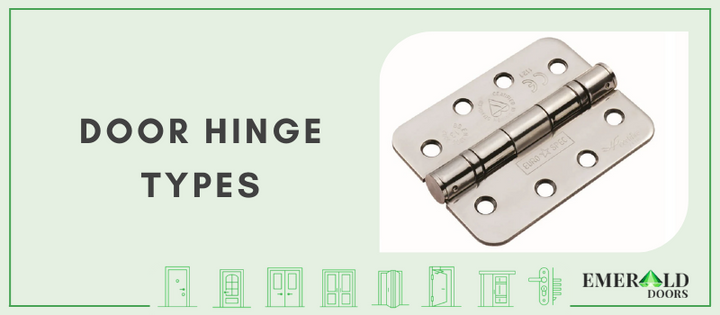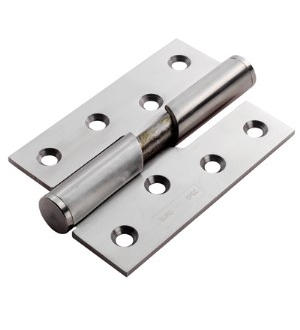
11 Door Hinge Types (Internal & External Doors)
Door hinges are a fundamental component of any door, providing the pivotal connection between the door frame and the door leaf. They play a critical role in allowing doors to swing open and closed smoothly while providing stability and security. When it comes to door hinges, there is a wide variety of types available, each designed to suit specific applications and door types.
In this article, we will explore the different types of door hinges, focusing on both internal and external doors, their features, and the factors to consider when choosing the right hinge for your needs.
5 Types of Internal Door Hinges
Below are the 5 most common internal door hinge types for your home.
-
Butterfly Door Hinge
-
Concealed Door Hinge
-
Barrel Hinge
-
Piano Hinge
-
Offset Hinge
Offset hinges, also known as swing clear hinges, are designed to swing the door completely clear of the door frame when opened. They create a larger opening space, making it easier for people with mobility aids, like wheelchairs, to pass through. These offset hinges are commonly used for internal doors in spaces where accessibility and ease of passage are important considerations.
6 Types of External Door Hinges
Below are the 6 most common external door hinge types for your home.
-
Butt Hinge
Butt hinges are one of the most common types of hinges that consist of two rectangular metal plates joined by a central pin, allowing the door to swing open and closed smoothly. These hinges are mortised into the door and frame, providing a clean and seamless appearance when the door is closed. They are available in various sizes and finishes, making them suitable for a wide range of applications.
-
Ball-Bearing Hinge
-
Pivot Hinge
-
T Hinge
-
Flush Hinge
Flush hinges are designed to be recessed into the door and frame, creating a flush and seamless appearance when the door is closed. These hinges are commonly used for external doors because they provide a secure and neat finish, making it difficult for intruders to tamper with the hinges from the outside. The flush design also reduces the risk of the door catching on clothing or other objects.
-
Strap Hinge
Factors to Consider when Choosing Door Hinges
When choosing door hinges, several factors should be considered to ensure they function effectively and suit the specific door and its application. The main considerations include:
-
Weight and Size
-
Material
-
Type
-
Security
For exterior doors or doors requiring extra security, consider hinges with non-removable pins or security features.
-
Maintenance
By considering these factors, you can choose the right door hinges that offer durability, functionality, and aesthetics for your specific application.
How to Measure Door Hinges
To measure door hinges correctly, follow these steps:
- Remove the existing hinge from the door and frame.
- Measure the height and width of the hinge plate (the part screwed onto the door) using a tape measure.
- Measure the diameter of the hinge pin (if applicable) to determine the hinge size.
- Measure the depth of the hinge cup (for concealed hinges) from the door's edge.
- Measure the screw hole spacing on the hinge plate.
- Note down these measurements to select the appropriate replacement hinge for your door.
Conclusion
Selecting the right type of door hinge is essential for ensuring the longevity, functionality, and security of your doors. Each type of hinge has its specific features and ideal applications. Whether you are installing internal doors within your home or external doors for a commercial building, understanding the different door hinge types will help you make an informed decision.
The quality of doors also matters when purchasing hinges. Invest in high-quality doors and hinges for smooth accessibility and safety features. Check out Emerald Doors wide collection of doors and hinges for your home!
FAQs on Door Hinge Types
-
What is the strongest door hinge?
-
What type of hinges will not rust?
-
What is the thickness of door hinges?
-
What hinges to use for heavy doors?
MORE RELATED ARTICLES
- How to Measure Door Hinges
- How To Fit Door Hinges
- How to Adjust uPVC Door Hinges
- How to Adjust Composite Door Hinges
ABOUT THE AUTHOR: SHABANA KAUSER
Shabana Kauser is the dynamic owner of Emerald Doors, the famous door-selling company in the UK with immense knowledge and experience in working with architecture, interior design, and home decor. She continues to share tips and technical know-how of balancing interior elements, door fittings, room aesthetics, and the like. Personally, she loves coffee, always dabbling with several blends.



